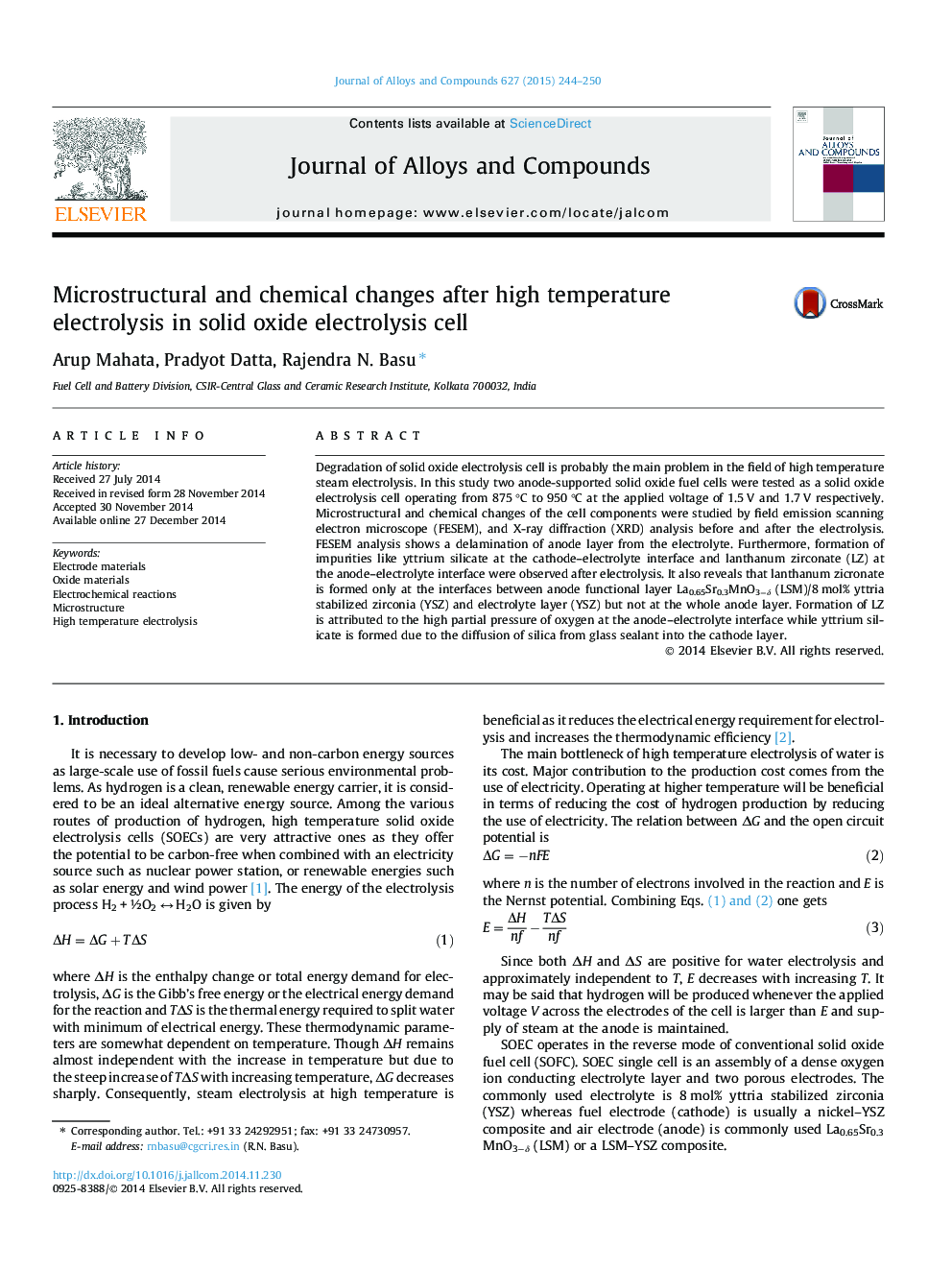| کد مقاله | کد نشریه | سال انتشار | مقاله انگلیسی | نسخه تمام متن |
|---|---|---|---|---|
| 1610005 | 1516266 | 2015 | 7 صفحه PDF | دانلود رایگان |
• Hydrogen production by running SOEC single cell.
• Delamination of anode layer from the electrolyte.
• Lanthanum zirconate formation due to high partial pressure of oxygen at the anode.
• Formation of yttrium silicate due to diffusion of silica at the cathode side.
Degradation of solid oxide electrolysis cell is probably the main problem in the field of high temperature steam electrolysis. In this study two anode-supported solid oxide fuel cells were tested as a solid oxide electrolysis cell operating from 875 °C to 950 °C at the applied voltage of 1.5 V and 1.7 V respectively. Microstructural and chemical changes of the cell components were studied by field emission scanning electron microscope (FESEM), and X-ray diffraction (XRD) analysis before and after the electrolysis. FESEM analysis shows a delamination of anode layer from the electrolyte. Furthermore, formation of impurities like yttrium silicate at the cathode–electrolyte interface and lanthanum zirconate (LZ) at the anode–electrolyte interface were observed after electrolysis. It also reveals that lanthanum zicronate is formed only at the interfaces between anode functional layer La0.65Sr0.3MnO3−δ (LSM)/8 mol% yttria stabilized zirconia (YSZ) and electrolyte layer (YSZ) but not at the whole anode layer. Formation of LZ is attributed to the high partial pressure of oxygen at the anode–electrolyte interface while yttrium silicate is formed due to the diffusion of silica from glass sealant into the cathode layer.
Journal: Journal of Alloys and Compounds - Volume 627, 5 April 2015, Pages 244–250
